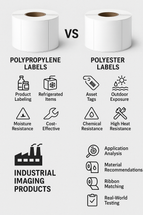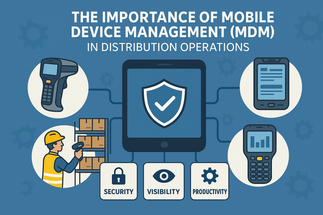Why Overengineering and Misaligned Deployments Are Costing You More Than You Think
In the high-stakes world of production, distribution, and data capture, there's a recurring theme we see too often: companies make technology decisions based on spec sheets instead of real-world throughput.
The Spec Sheet Trap
Spec sheets are seductive. They dazzle with performance benchmarks, lightning-fast processing speeds, and ruggedness ratings that imply the device could survive a trip to Mars.
But here’s the reality: If the technology doesn’t align with how your team actually works, those specs don’t mean much.
We’ve seen customers invest in mobile computers with 2D long-range imagers and 5G-ready chips… to scan a few barcodes in a small stockroom. Or printing systems with advanced RFID encoding for facilities that don’t even use RFID tags.
Why? Because decisions were made to check boxes, not to improve throughput.
What Does “Building for Throughput” Mean?
Throughput is about the actual output of your operation, how efficiently goods, data, or services move through your workflow. Building for throughput means designing your infrastructure and selecting technology based on how work flows, not just how devices perform in a vacuum.
It’s understanding:
How fast your team can pick, pack, or print with a particular setup How long a scan takes when workers are tired, gloved, or rushed How device ergonomics affect fatigue, mistakes, or downtime How quickly label media can be changed and jobs queued on a busy floor
Specs might say a printer runs at 14 ips (inches per second), but if label reloading takes five minutes every time, who cares?
Overengineering = Underperforming
When tech is overengineered, it's often too complicated for day-to-day use. Your staff ends up bypassing features, misusing settings, or worse, abandoning devices altogether.
Examples we’ve encountered:
Rugged tablets with too many buttons and apps cluttering workflows Enterprise scanners with settings never configured, slowing scans Advanced label printers deployed in environments without training or proper software
In every case, throughput suffered.
Misalignment Is Expensive
Misaligned deployments cost more than just money. They cost time, trust, morale, and productivity. When workers can’t rely on their tools or when the tools aren’t intuitive, error rates increase and efficiency drops. Worse yet, you end up replacing expensive tech sooner than expected because it never fit the job in the first place.
A Better Way: Workflow-Driven Technology Strategy
At Industrial Imaging, we believe in reverse engineering the technology stack, starting with how your team works and aligning every hardware or software choice to support that workflow.
That means:
Evaluating your floor layout, scan points, and label requirements Right-sizing the spec: not underpowered, not overbuilt Training teams on what matters most Deploying technology with white-glove onboarding and support
The goal isn’t to impress IT with spec sheets. It’s to move product, capture data, and print accurately, faster and more reliably.
Bottom Line:
Stop building for features you’ll never use. Start building for throughput.
Because the best technology isn’t the most powerful on paper, it’s the most productive in your hands.
Need help evaluating your current devices or planning your next deployment? Let’s talk. We specialize in matching workflow to technology for maximum output.
Recent Posts
Dec 1st 2025
Understanding Poly Labels: Polypropylene vs Polyester (and How to Choose the Right One)
Nov 24th 2025
The Importance of Mobile Device Management (MDM) in Distribution Operations
Nov 17th 2025



